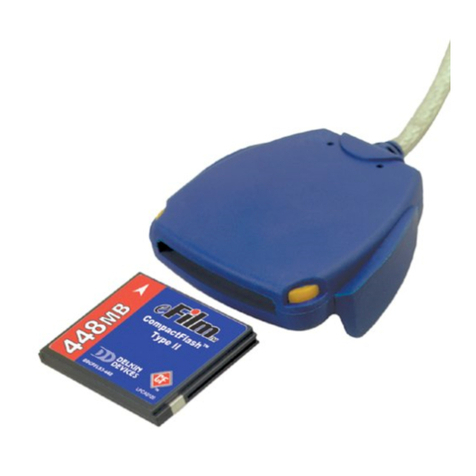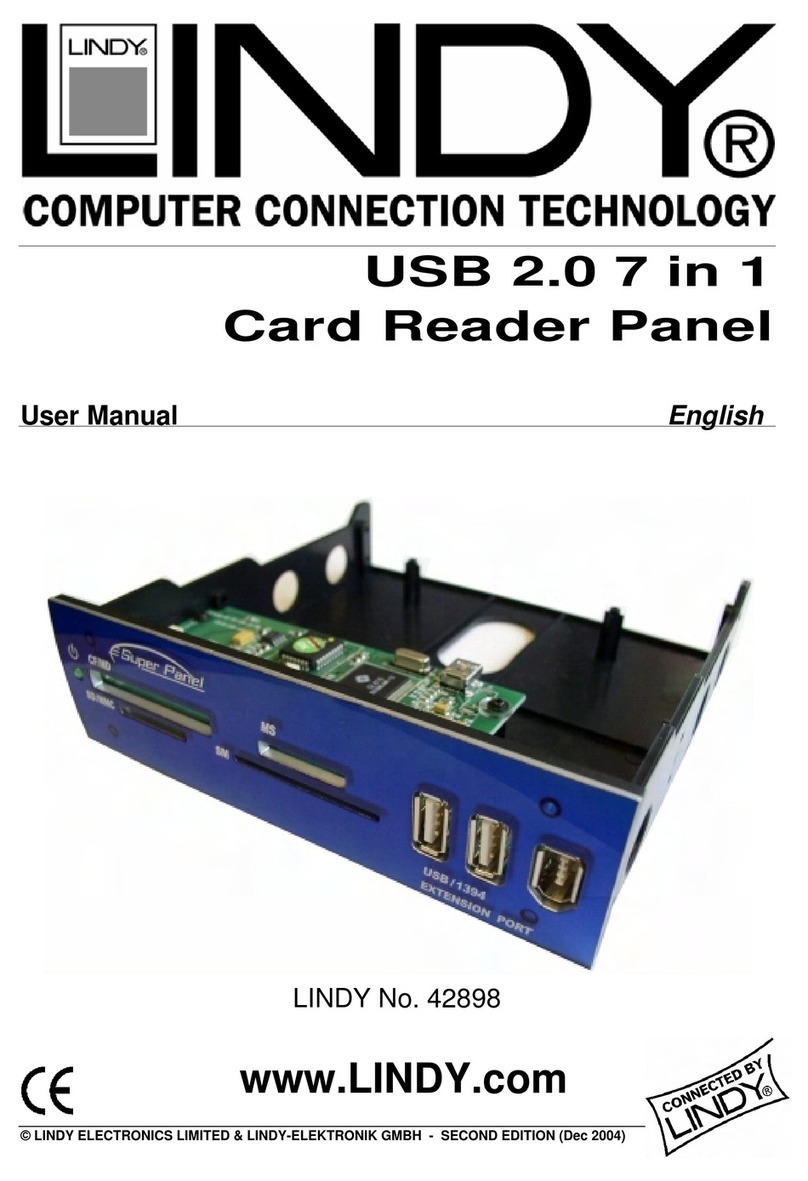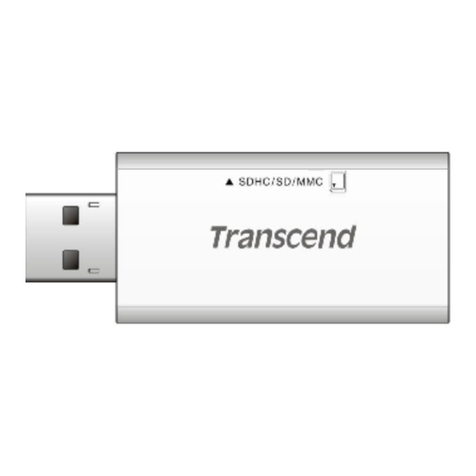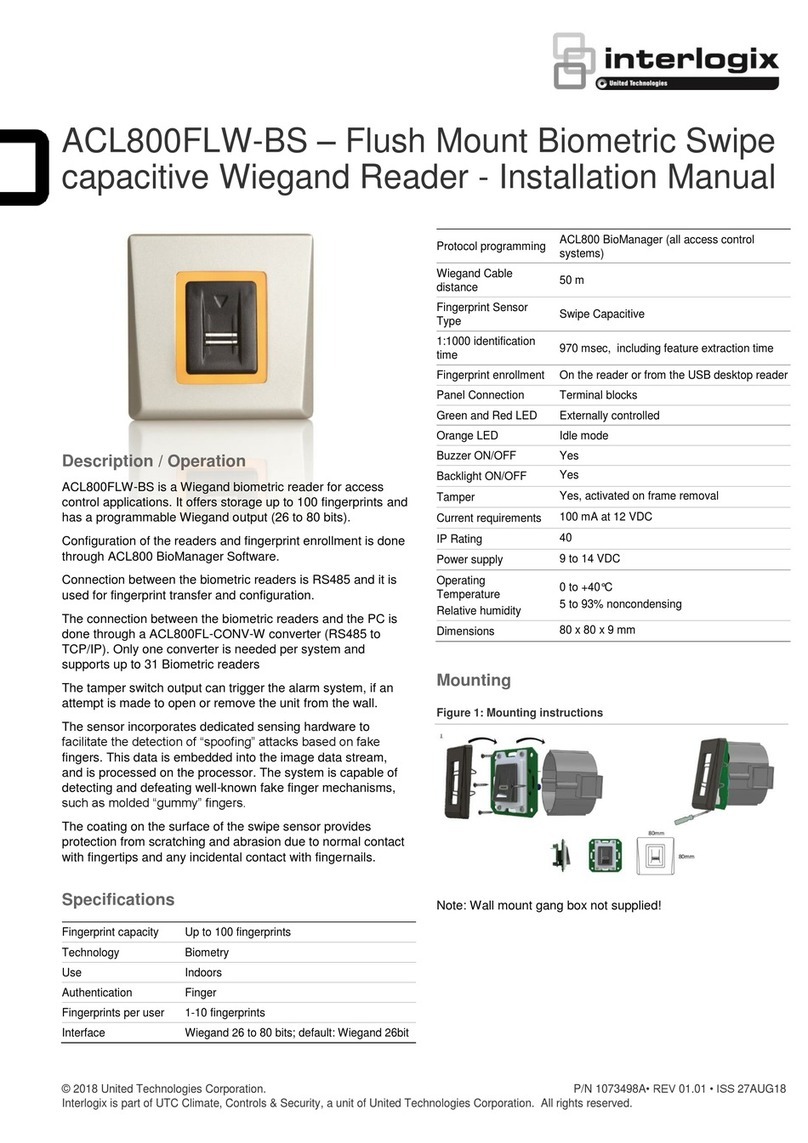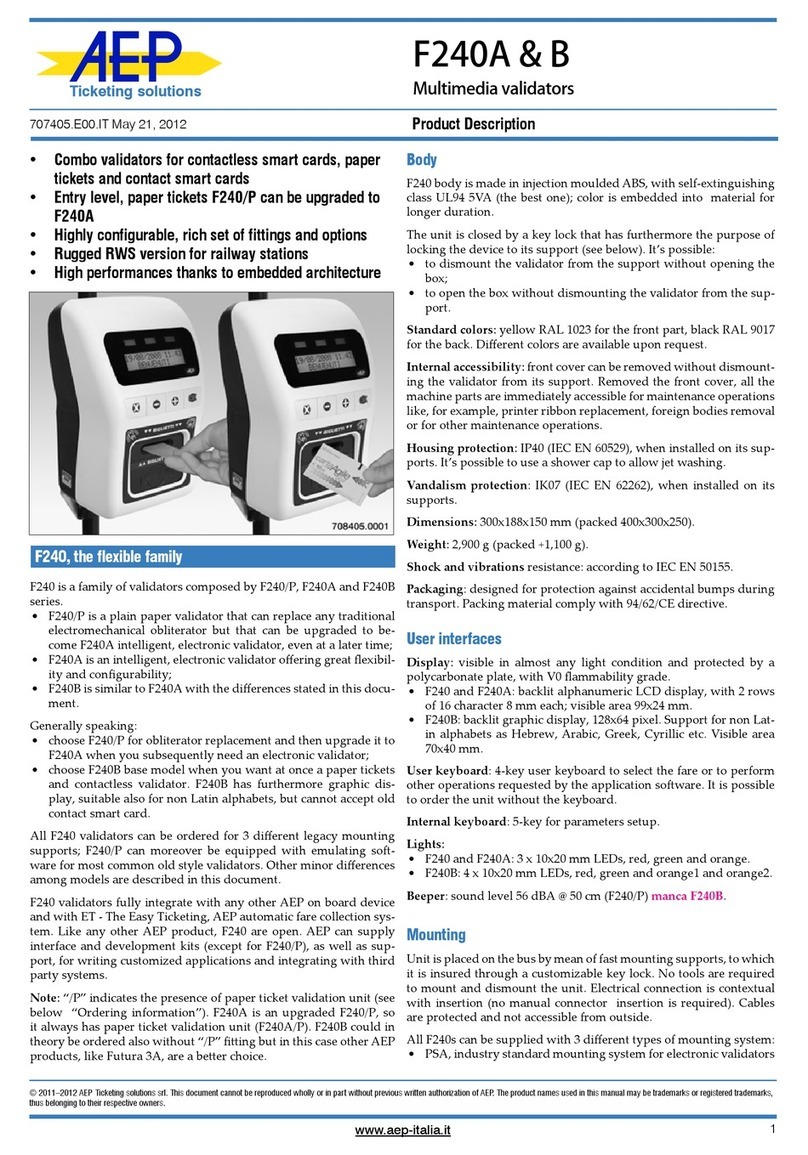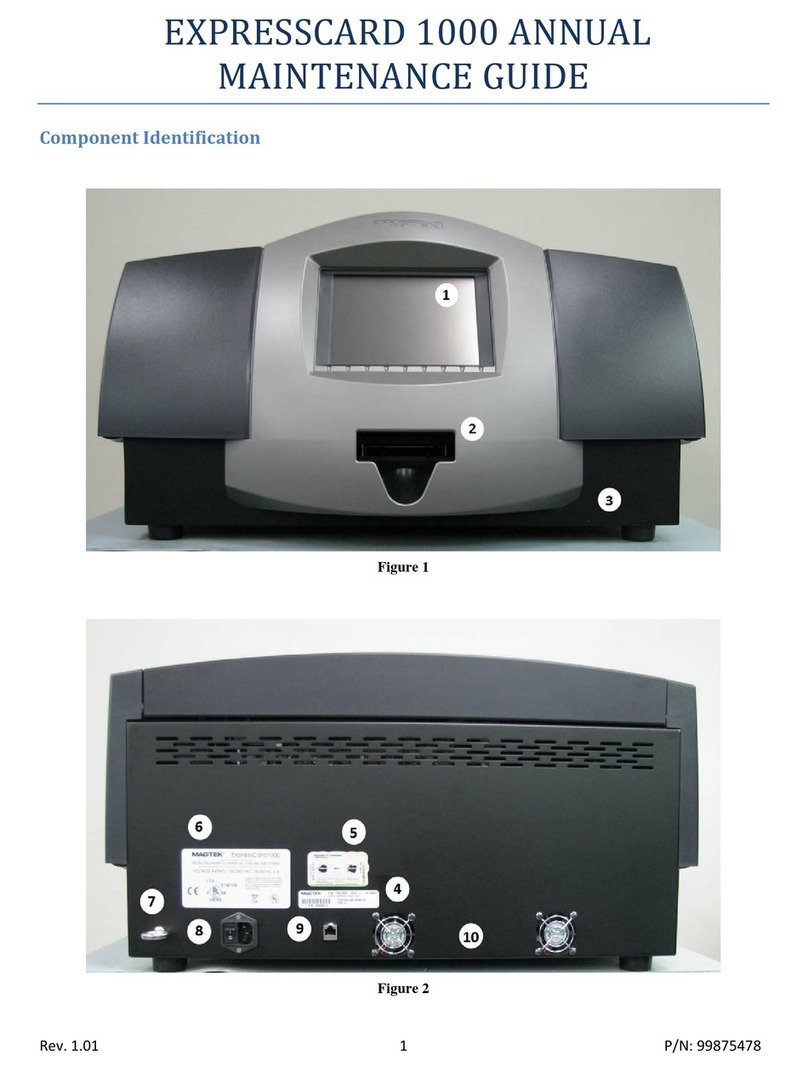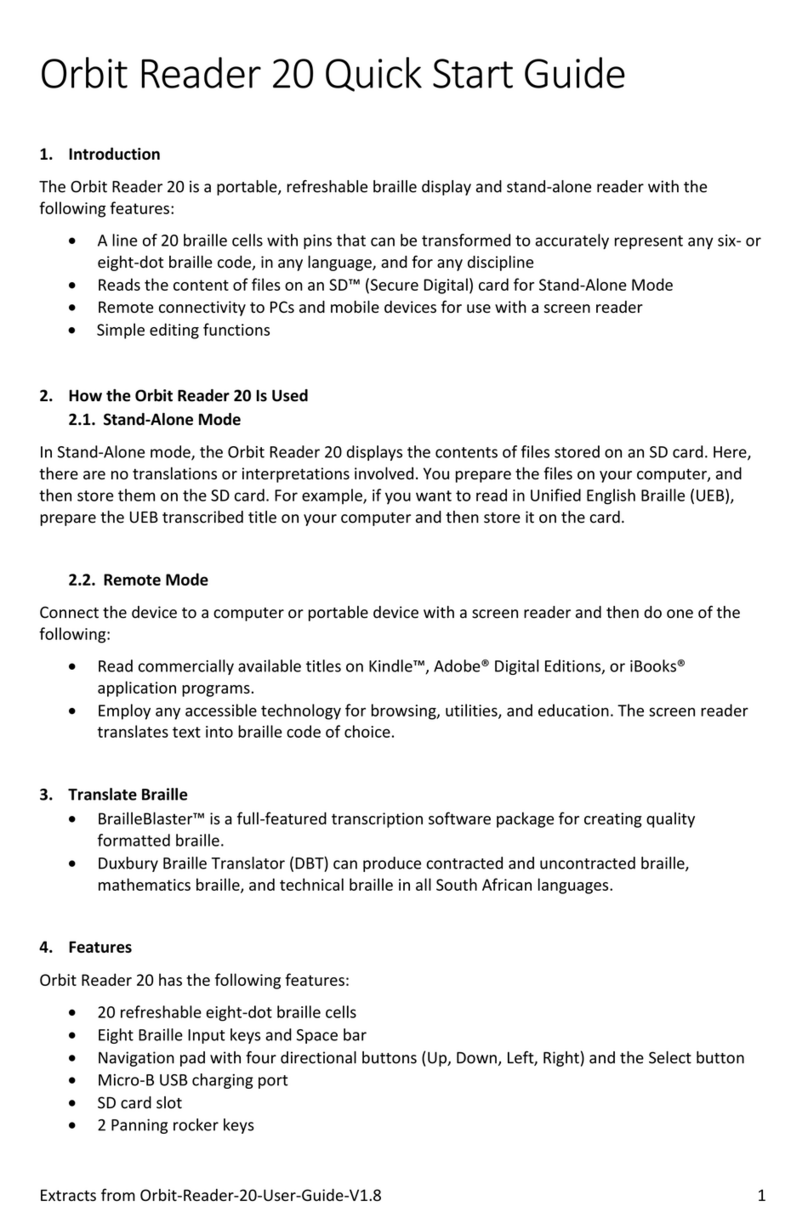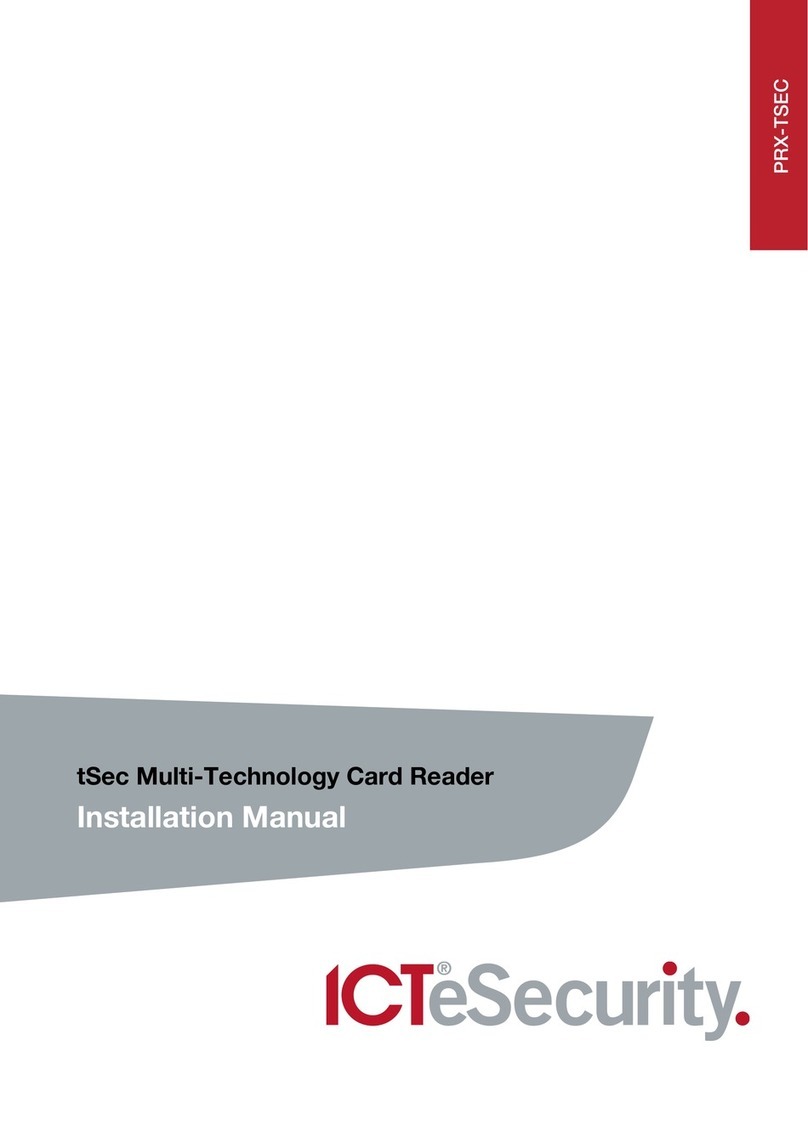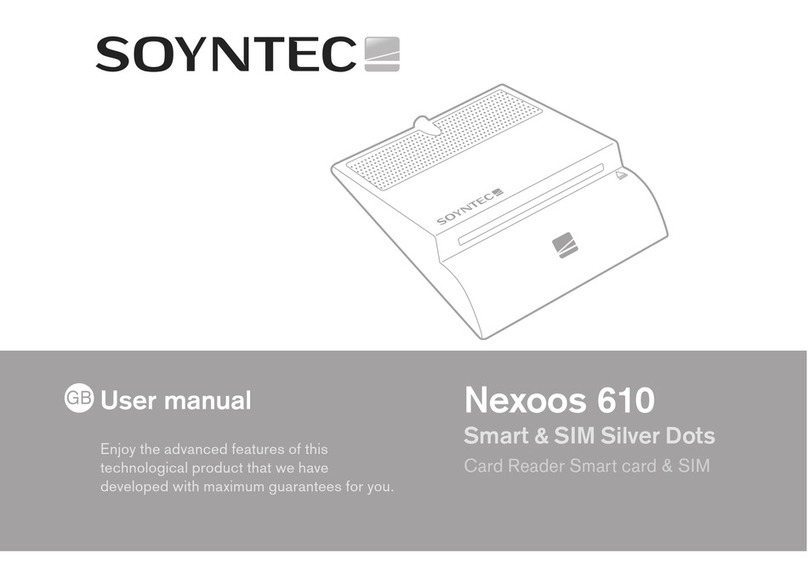Software House iSTAR Edge Datasheet

1
System Components
iSTAR Edge is a smaller, cost effective, 2 or 4 reader iSTAR that can be powered over its
Ethernet connection using PoE, and is suitable for placement above or near the door. iSTAR
Edge can be clustered with other iSTAR Edges and iSTAR eXs.
UL has evaluated and approved firmware version 5.1.x.xxxxx where 'x' may indicate any
numeral representing minor revisions or debugging.
iSTAR Edge has:
8 onboard inputs plus 32 or 64* optional I8 inputs
4 onboard relay outputs plus 32 or 64* optional R8 outputs
2 onboard direct connect Wiegand reader connectors
3 serial ports for RMs, I8s, I8-CSIs, and R8s.
2 AUX power outputs for PIRs, etc.
* 4 Reader model supports 8 I/8s and 8 R/8s.
UM-245 Version A3
June 2011
iSTAR Edge
Installation Quick Start Guide
NOTE iSTAR Edge requires the following minimum versions:
C•CURE 9000 version 1.93 (for 2 or 4 reader models)
C•CURE 800/8000 version 10.0, 10.1 (for 2 reader model only)

Overview and Introduction
2
Overview and Introduction
Figure 1 shows a photograph of the iSTAR Edge with an optional PoE board and with an I8
and R8 mounted on the door.
Figure 1: iSTAR Edge Photo
The 4 reader model can be ordered with 2 RM-4s mounted on the door.
Figure 2 on page 3 shows an iSTAR Edge layout.
I8 R8
PoE
Ethernet
Tamper
Module
(I8 and R8 not included)
(Optional)

Overview and Introduction
3
iSTAR Edge Layout
Figure 2: iSTAR Edge Layout
4 Inputs
AUX Output
Wiegand
Connector 1
RM Port 1
Relay 1
4 Inputs
AUX Output
Connector 2
Wiegand
RM Port 3
RM Port 2
Relay 2 Relay 4
Relay 3
USB Host Ports
Power Fail Power E-net
Tamper
FAI Input
Low Batt
USB Device Port (Not used)
In Key Latch input

Overview and Introduction
4
Main Features Main features of iSTAR Edge include:
Storage
> 250k cards.
64 MB of RAM.
128 MB of onboard flash.
Power
Powered by
Ethernet connection: UL 294 Listed PoE or PoE Plus using optional add-on board
(edgePower). A UL Listed surge protector must be used with the PoE module. The PoE
board can supply either 12VDC or 24VDC to the relay outputs (selectable via a jumper
on the PoE board).
- or -
12/24V DC, from UL Listed apS power source or other UL 603 Listed, power-limited
power supply with appropriate ratings and a minimum 4 hours of standby power.
Provides up to 1.5A @ 12V unswitched to external devices:
Wiegand readers
RS-485 ports
Two 2-pin AUX power connectors for PIRs and motion sensors.
Provides power to relays:
Relays configurable to be wet or dry by jumper.
Wet Relays provide current at main input voltage (12 or 24V on PoE, 12 or 24V with
external DC supply).
Each wet relay is limited to 0.75A (at 12 or 24V).
Each dry relay is limited to 3.0A (at 12 or 24V).
Readers
2 or 4 readers total.
2 Wiegand connectors are available.
2 RMs are available to be configured for the 4 reader model to provide 4 Wiegand
connectors.
3 RS-485 serial ports are available.
Readers can be any combination of 2 from Wiegand ports and/or RMs on any of 3
serial ports.
I/O
8 general purpose inputs.
4 general purpose relays:
Dry or wet contact settable per relay by jumpers.
4-pin connectors to support NO/NC and dry/wet configurations.
2 reader model, 4- I8 and 4- R8 allowed to be configured on any of the three RS-485 ports.

Overview and Introduction
5
4 reader model, 8- I8 and 8- R8 allowed to be configured on any of the three RS-485 ports or
the optional 2 RM-4s.
Special purpose inputs:
Tamper (from enclosure door)
Main AC fail (from apS)
Low external battery (from apS)
FAI Supervision State (J40 F input)
FAI Relay Control
FAI Key Supervision State (J40 K input)
Onboard battery low
3 RS 485 serial ports.
USB Ports
2 USB host ports. (These are the wide and flat USB connectors used by memory sticks,
used when the iSTAR Edge is the host of the attached devices.)
1 USB device port. (This is the square connector used when the iSTAR Edge itself is the
client device.) (not currently used)
The only use of USB in the first version is to import encryption keys, in the same way as
iSTAR eX.
Communications
One 10/100 Ethernet port.
No secondary communication path.
Full 256 bit AES encryption, as with iSTAR eX
Can cluster with other iSTAR Edges
Can cluster with iSTAR eXs
FAI
Fire Alarm Interlock - When the F input is true, FAI activates relays that are enabled for
FAI by individual enable switches.
Latch option is available by switch control. If the selected relays are latched, they will be
cleared to normal by the key (K) input.
Onboard controls
LCD with backlight for diagnostics.
Rotary switch for diagnostics, as with iSTAR eX.
LEDs for serial, Ethernet, power and relay state.
Two power LEDs: one super bright LED that is on when the enclosure door is closed,
and one green LED that is always on when main power is present.
Relay activation LEDs are not affected by enclosure door.
NOTE The following 4 inputs to the host are determined by the firmware. There is no actual
wiring to the iSTAR Edge board.

Overview and Introduction
6
All other LEDs only turn on when enclosure door is open.
Reset button.
Switches for serial termination of RM ports.
Switches for selection of relays for control by FAI.
Switch for FAI Latch.
Jumpers for relay wet/dry control.
Housing
Enclosure is similar to RM 4e enclosure.
Mountable in existing apC/L enclosure.
Compliance
FCC, CE, EN50133, UL60950 by CB Scheme (International Safety) & RoHS.
NOTE For all compatible devices, see the iSTAR Edge Installation and Configuration Guide
(Doc. No. UM-236).

Pre-Installation Planning
7
Pre-Installation Planning
Pre-installation involves the following:
1. Checking equipment (hardware, software, power supply, and wiring).
2. Checking power, wiring, equipment clearances, and code compliance at the site.
3. Ensuring the proper tools are available.
Equipment Check
Verify that the contents of the shipped boxes match the packing lists. Contact Software House
if any items are missing or damaged.
The iSTAR Edge hardware does not include mounting hardware for an installation. Mounting
hardware depends upon the site and must be approved by a structural engineer or other
certified professional.
Software House recommends anchoring systems capable of sustaining a 20 lb. load.
Site Check
Ensure that the mounting site is ready:
Mounting dimensions
• The can is 12” by 12” (30.48 x 30.48 cm)
• Upper mounting holes are 9" (22.86 cm) center to center.
• Bottom mounting holes are 10.5" (26.67 cm) below the upper mount holes.
The site has been approved and all wiring complies with UL requirements and other
codes, as appropriate.
All preliminary site work is complete.
An appropriate power supply is accessible.
The site is clean and free of dust or other contaminants.

Pre-Installation Planning
8
iSTAR Edge Mounting Requirements
The mounting dimensions and board overlay are shown in Figure 3.
Figure 3: Mounting Requirements
Installation Tools
Antistatic floor mat, tabletop mat, and wrist strap.
Standard tool kit
3/32" (2.4 mm) screwdriver (supplied with iSTAR Edge)
Security screwdriver (contact Software House)
Small needlenose pliers; small Phillips screwdriver; wire strippers
5/16" (#10) nut driver (for securing shield wires to a ground stud)
(228.6)
9.00
(304.8)
12.00
(304.8)
12.00
DOOR 2
IN 1
IN 2
IN 3
IN 4
AUX 1
WIEGAND 1
RM 1
RELAY 1
RELAY 2
PWR
RM 3
10/100
RELAY 4RELAY 3
RM 2
WIEGAND 2
AUX 2
IN 8
IN 7
IN 6
IN 5
DOOR 1
LCD DISPLAY
OPTIONAL
POE MODULE
iSTAR
Edge
TEMPLATE
ENCLOSURE
INSTALL SHEET, iSTAR Edge,
MOUNTING TEMPLATE
8200-0910-01, REV A3
SHEET 2 OF 2, SCALE 1:1
DIMENSIONS IN INCHES
( )DIMENSIONS IN MM

Installation Requirements
9
Installation Requirements
iSTAR Edge Cabinet Requirements
The iSTAR Edge cabinet must conform to the specifications shown in Table 1.
Environmental Requirements
Table 2 shows the iSTAR Edge environmental requirements.
Table 1: Cabinet Assembly Specifications
Item Specification
Weight <10 lbs (<4.6 kg)
Height 12" (30.48 cm)
Width 12" (30.48 cm)
Depth 4.5" (11.4 cm)
Table 2: Environmental Requirements
Status Range
Operation 32° F (0° C) to 120° F (48.9° C)
Storage 4° F (-20° C) to 158° F (70° C)

Installation Requirements
10
Power Requirements
The standard iSTAR Edge uses a UL Listed 603 External Power Supply, such as the Software
House apS or uses a Power Over Ethernet (PoE) injector with UL listed surge protector.
To ensure adequate power, calculate the total power requirements of iSTAR Edge and its
related hardware, as follows.
Add the total current power for components in the system (modules, relays, optional
modules, readers, and wire resistance).
iSTAR Edge Components and Boards
Table 3 shows the power requirements of iSTAR Edge components and attached boards.
aRM-4 board has only been evaluated by UL with RM Series readers (RM 1,2,3)
bRM-4E boards have only been evaluated by UL for use with RM-DCM-2 enclosure.
iSTAR Edge Input Power Rating
The iSTAR Edge has the following input ratings when using an external power supply:
12 VDC, 3.8 A
24 VDC, 3.1 A
Individual/Total Loads
RS-485 Reader Power Outputs: 10.6-12.5 VDC, 1.5 A max each.
Wiegand Reader Power Outputs: 10.6-12.5 VDC, 350 mA max each.
Total of all Reader and AUX outputs combined (RS-485 & Wiegand) not to exceed 1.5 A
Four (4) activated relay coils = 100 mA, 25 mA/relay
One I/8 module – 12 VDC, total= 125 mA
One R/8 module – 12 VDC, total= 325 mA (125 ma + 25 mA for each active relay (max 4))
R/8 relay contact ratings – 30 VDC at 3A (resistive)
Table 3: Component and Board Power Requirements
Component/Board Current Draw at 12VDC
iSTAR Edge 400 mA with LCD - no load
RM-4 boarda80 mA without LCD - no load
180 mA with LCD - no load
RM-4E boardb125 mA - no load
I/8 board 125 mA - no load
R/8 board 150 mA - no active relays.
Add 20 mA for each active relay

Installation Requirements
11
iSTAR Edge Wiegand Reader Ports
Table 4 shows the maximum ratings for iSTAR Edge Wiegand direct reader ports.
Table 5 shows maximum rating for RM Reader ports.
Ethernet Requirements
The iSTAR Edge Ethernet connection is:
Onboard 1 Ethernet port – supports 10/100Base-T Ethernet connections.
Table 4: Wiegand Port Rating
Port Rating
Reader output control
(red, green, yellow, beeper)
Low = 0 v to 0.8 v
High = 4.0 v to 5.25 v
20 mA maximum
Reader input data lines
(D0, D1)
Low = 0 v to 0.8 v
High = 4.0 v to 5.25 v
Reader output voltage +12 VDC
Reader current 350 mA max per reader, not to exceed
1.5 A for Readers and AUXs
Table 5: RM Port Rating
Port Rating
Reader output voltage +12 VDC
Reader current 1.5 A max per port, not to exceed
1.5 A for Readers and AUXs

Installation Requirements
12
Wiring Requirements
Table 6 shows general wiring requirements for an iSTAR Edge and its components.
Table 6: Equipment Wiring Specifications
Signal From To
Belden #
or equiv. AWG
#
Prs Shield
Max
Length
Max. Wire
Resistance
RS-485 Comm, two
wire
iSTAR
Edge
RM & I/O
Modules
9841 24 1 Yes 4000 ft.
(1212 m)
103
Power iSTAR
Edge
RM & I/O
Modules
8442/8461 22/18 1 No Range of
600 ft. to
1500 ft.
depends
on AWG
See Note b
RJ45-Ethernet iSTAR
Edge
Hub, Host N/A Cat 5 or
more
24
2 N/A 328 ft.
(100 m)
8.4
Supervised Input iSTAR
Edge or I8
Input 8442/8461 22/18 1 No 2000 ft.
(606 m)
Request-to-exit
(REX or RTE)
iSTAR
Edge or
RM-4/4E
module
Switch 8442/8461 22/18 1 No 2000 ft.
(606 m)
Door contact
(DSM)
iSTAR
Edge or
RM-4/4E
module
Contact 8442/8461 22/18 1 No 2000 ft.
(606 m)
Supervised Input (UL)
Note a
iSTAR
Edge or I8
Input 9462 22 1 Yes 2000 ft.
(606 m)
Relay Control RM-4
module
ARM-1 9462 22 1 Yes 25 ft.
(7.6 m)
.04
Reader Data iSTAR
Edge or
RM-4/4E
module
Proximity/
Wiegand
signaling
read head
9942
9260
Alpha wire
5386C
22
20
18
3 Yes 200 ft.
(60.96 m)
300 ft.
(91.4 m)
500 ft.
(152.4 m)
3.2
3.2
3.2
a. To comply with UL requirements, use shielded, minimum 22 AWG stranded, twisted pair cable for monitor points, DSMs, and
REXs. Use Belden 9462 or equivalent.
b. Calculations are based on a single RM-4 reader with keypad and LCD (250 mA):
Using 22 AWG, distance = 600 ft. (.0165 ft.)
Using 18 AWG, distance = 1500 ft. (.0065 ft.)
NOTE UL Listed Panic hardware shall be used to allow emergency exit from a protected area.

Installation Requirements
13
Grounding Requirements
Grounding requirements are as follows:
Ensure that the iSTAR Edge controller is properly connected to an earth ground at the
ground stud in the cabinet. Identified by symbol.)
Use 16 AWG or larger wire.
Ensure that the shield wires for the readers, inputs, outputs, and AUX cables are grounded
to the nearest earth/ground connection at one end only of the cable.
Disconnect the ground wire last to provide maximum protection to the equipment and
personnel.
NOTE All cabling must be shielded.

Power - Batteries - Backup
14
Power - Batteries - Backup
As indicated on the door map shown below, the following are power specifications for the
iSTAR Edge:
Entire Unit
• Local Power 12 VDC, 3.8 Amp Max.
• Local Power 24 VDC, 3.1 Amp Max.
Reader and I/O Module Supply (Total of AUX, RM, and Wiegand Ports)
• 12 VDC, 1.5 Amp
– AUX Ports 12 VDC 350 mA each
– RM Ports 12 VDC, 1.5 Amp each (but the max. is also 1.5 Amp for all)
– Wiegand Ports, 12 VDC, 350 mA each
Relays
• 30 VAC/DC 3.0 Amp Max. (Dry) each
• 12 or 24 VDC 0.75 Amp Max. (Wet) each
Figure 4: Specifications
NOTE If using Power Over Ethernet (PoE), be sure that the jumpers on the PoE
board are set correctly. As shown in Figure 4, there is a jumper position
for PoE and another for PoE Plus (+).
There is also a 2 position jumper to select 12 or 24VDC to power the
Edge. The voltage that is configured will be used to power the Edge and
also to supply the wet relays for door locks.
PoE Plus
PoE
3.0
0.75
12 or 24 VDC

Power - Batteries - Backup
15
)
Other interactions with the power system include:
AC / Main Fail input:
Indicates whether the external power source has reported loss of its main power.
Shares connector and Ground pin with Low Battery.
Normally closed dry relay contacts are required. This signal is normally wired to the
energized NO output on the apS.
Configurable on host as an unsupervised input, as with iSTAR eX, iSTAR Pro.
Low Battery input
Indicates whether external power source, has reported its battery is low.
Wired in from external power source.
Shares connector and Ground pin with AC / Main Fail.
Normally closed dry relay contacts are required.
Configured on host as unsupervised input, as with iSTAR eX, iSTAR Pro.
Onboard Battery Low input
Internal measurement (no connections necessary) of onboard AA alkaline batteries.
Active if their voltage is below 4.6 volts or they are not present or one or more of them is
not making full connection.
This informs user that they should replace the onboard backup batteries for this controller
as soon as possible.
No need to power down the controller to remove/replace the batteries
Onboard batteries are alkaline and non-rechargeable, so this is a reasonably accurate
measure of when the batteries need to be changed.
Configured on host as an unsupervised input. This is a new input not present in iSTAR eX
or iSTAR Pro.
NOTE Do not connect to a receptacle controlled by a switch.
NOTE For UL Listed products, a UL 603 Listed, power-limited power supply
must be used.
NOTE The Tamper, Low Battery, and AC power fail inputs must be enabled
and connected to report for compliance with UL requirements.
NOTE Shielded cable must be used for AC Fail & Low Battery Input
connections

Power - Batteries - Backup
16
Onboard backup
batteries
iSTAR Edge uses four onboard AA batteries to power backup to flash on loss of main input
power. These batteries must be non-rechargeable Alkaline batteries, specifically:
AA
Alkaline
2.5 Amp hour
Button top
Backup When power (input voltage) drops too low to support full operation, power usage is reduced
as much as possible, processes are stopped and data is written into flash. Processes remain
stopped until the input voltage returns to a normal operating range. At that point, iSTAR
Edge reboots and reloads data from flash to RAM and starts processing again.
The only input that controls the initiation of iSTAR Edge’s power-fail backup process is iSTAR
Edge's own onboard measurement of incoming power voltage. iSTAR Edge measures external
power voltage every 1/10 of a second. When external power voltage moves outside of normal
operating voltage (10.2 V to 14.4 V for nominal 12 V operation, or below 20.4 V for nominal 24
V operation), iSTAR Edge will initiate the backup process.
When the backup process starts iSTAR Edge will:
Cut power to as many non-critical devices as possible, including:
• LEDs
• LCD backlight
• Wiegand readers
• AUX power ports
•WET relays
• Relay coils are de-energized, i.e. relays revert to normal state - NO contacts open and NC
contacts close.
Set the following devices to low power or shutdown mode
• Ethernet circuit
• Serial transceivers
Stop all processes
Write data in RAM to flash.
iSTAR Edge issues an activity report indicating a backup is beginning.
As with iSTAR Classic and iSTAR eX, the backup process will finish even if power returns
during the backup process.
When the backup completes, iSTAR Edge will check whether power voltage has returned to
normal operating range. If the voltage is within the normal range, iSTAR Edge will reboot.
As with iSTAR Classic, iSTAR Pro and iSTAR eX, data can only be restored if the clock is valid
when the iSTAR boots. Otherwise, the firmware would not be able to make valid access
control decisions. As with iSTAR Pro, iSTAR Classic and iSTAR eX, if the clock is not valid on
reboot the iSTAR will not restore any data, and will in fact invalidate all data, including
activity history.

Inputs
17
Inputs
There are eight onboard inputs available on the iSTAR Edge. Pin 2 is Ground.
Figure 5: iSTAR Edge Inputs
The type of supervision is configured in the host.The inputs are the same as the iSTAR eX.
Supervision Modes are shown in Table 7. The first three methods allow you to wire both NO
and NC inputs. The wiring determines which it is. The remaining choices require you to pick
either NO or NC.
IN1
IN2
IN3
IN4 IN8
IN5
IN6
IN7
Pin 2
Pin 2
++
Table 7: Supervision Modes
Mode Comment
NO/NC Double Resistor 1K
Wire with Parallel/Serial for NO and Serial/Parallel for NC.
Traditional Software House Method.
1K = Normal. NO Alert = 500 ohms, NC Alert = 2K
NO/NC Double Resistor 5K
Wire with Parallel/Serial for NO and Serial/Parallel for NC.
5K = Normal. NO Alert = 2500 ohms, NC Alert = 10K
NO/NC Double Resistor 10K
Wire with Parallel/Serial for NO and Serial/Parallel for NC.
10K = Normal. NO Alert = 5K, NC Alert = 20K
NO Double 1K Parallel and Serial Resistors
NC Double 1K Serial and Parallel Resistors
NO Double 5K Parallel and Serial Resistors
NC Double 5K Serial and Parallel Resistors
NO Double 10K Parallel and Serial Resistors
NC Double 10K Serial and Parallel Resistors
NO Single 5K Parallel Resistor
NC Single 5K Series Resistor
NO Single 10K Parallel Resistor
NC Single 10 K Series Resistor
NO Non Supervised No Resistors
NC Non Supervised No Resistors

Inputs
18
NO/NC Double Resistor 1K
This is the traditional Software House method of supervision where 1K is considered Secure
and 500 orare considered Alert. Notice that the wiring is different for NO and NC.
Figure 6: NO / NC Double Resistor 1K
This method will report:
Short
Alert (500 ohms)
Normal (1K)
Alert (2K)
Open (>30K)
Line Fault (Any unexpected value) Usually due to wrong value resistors or faulty
resistors.
For UL Listed products,
burglar alarms must be supervised.

AUX Outputs
19
AUX Outputs
The AUX outputs can supply 350 mA for motion sensor or PIR type devices.
The voltage is 12 VDC.
Figure 7: AUX Wiring
Wire the switch contacts of the PIR to one of the iSTAR Edge inputs, using the proper resistor
supervision.
Relay Outputs
The relays can be used as DRY or WET. Figure 8 shows a jumper for each relay to set the
mode.
Figure 8: Relay Outputs Dry/Wet Jumpers
Relay 1
Relay 2 Relay 3
Relay 4

Relay Outputs
20
Dry Relay Wiring
Figure 9 shows DRY mode. Max current is 3A at 30 VAC/VDC. Use NO or NC as appropriate.
Notice that jumper is in the Dry position.
Figure 9: DRY Relay Wiring
Wet Relay Wiring
Figure 10 shows WET wiring for a normal NO Latch. The iSTAR Edge will supply either 12
VDC or 24 VDC depending on the input supply. Current is limited to 0.75 A. Notice that the
GND is used for common, not the C pin. Notice that the jumper is in the Wet position.
Figure 10: WET Latch
Other manuals for iSTAR Edge
1
Table of contents
Other Software House Card Reader manuals
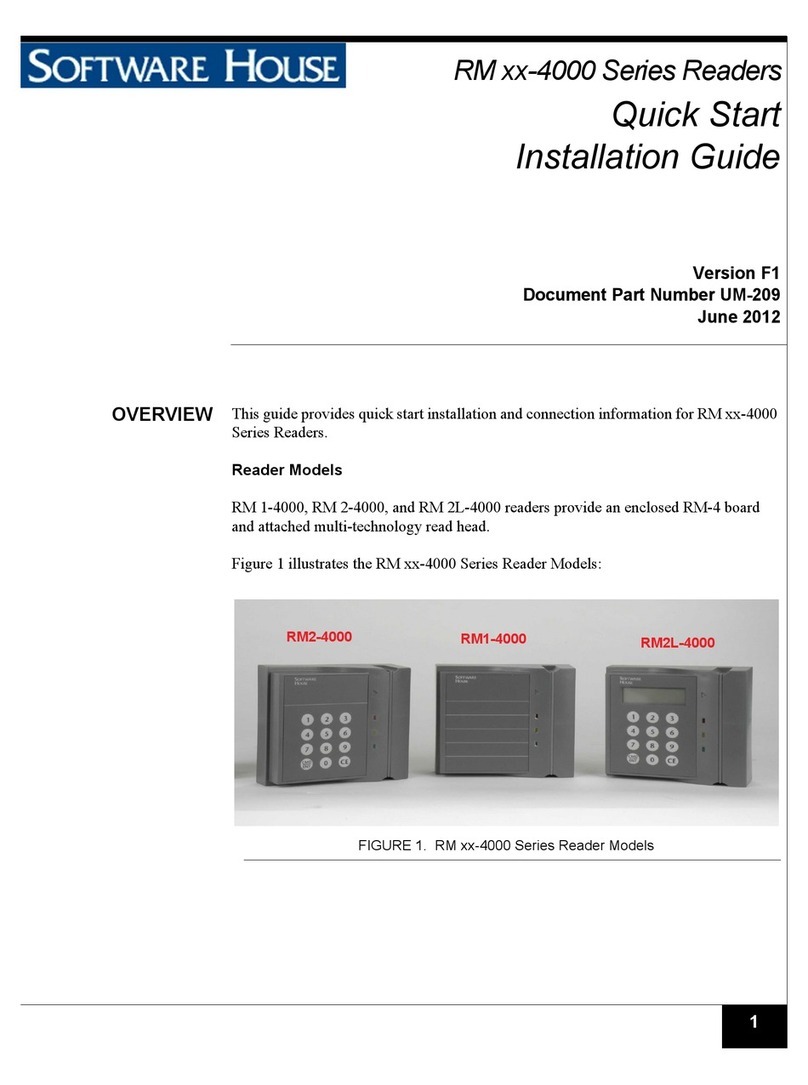
Software House
Software House RM 4000 Series Instruction Manual
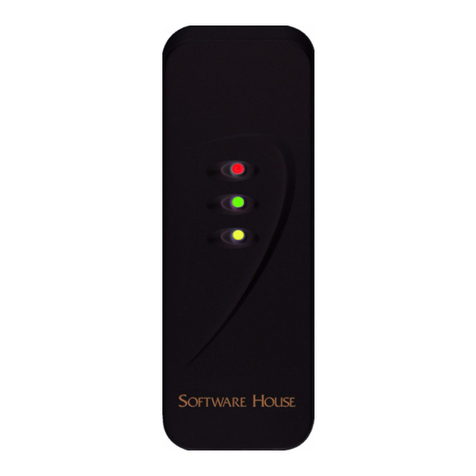
Software House
Software House SWH-4000 User manual
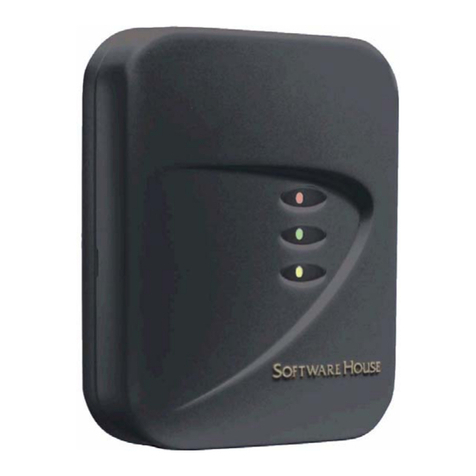
Software House
Software House SWH-400 Series User manual
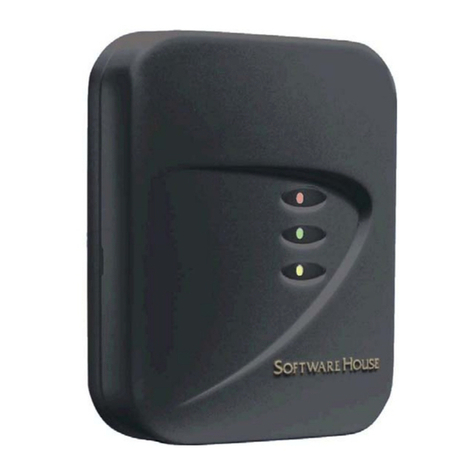
Software House
Software House SWH-4100 User manual

Software House
Software House SWH-4000 User manual
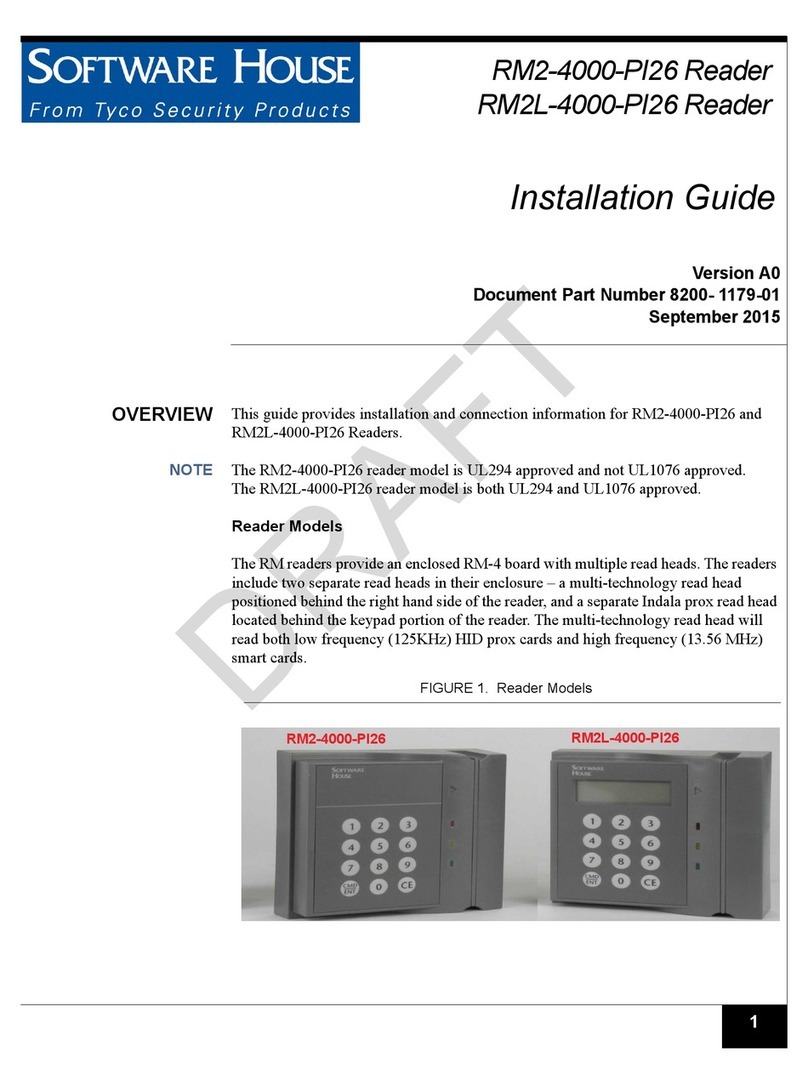
Software House
Software House RM2-4000-PI26 User manual
Popular Card Reader manuals by other brands
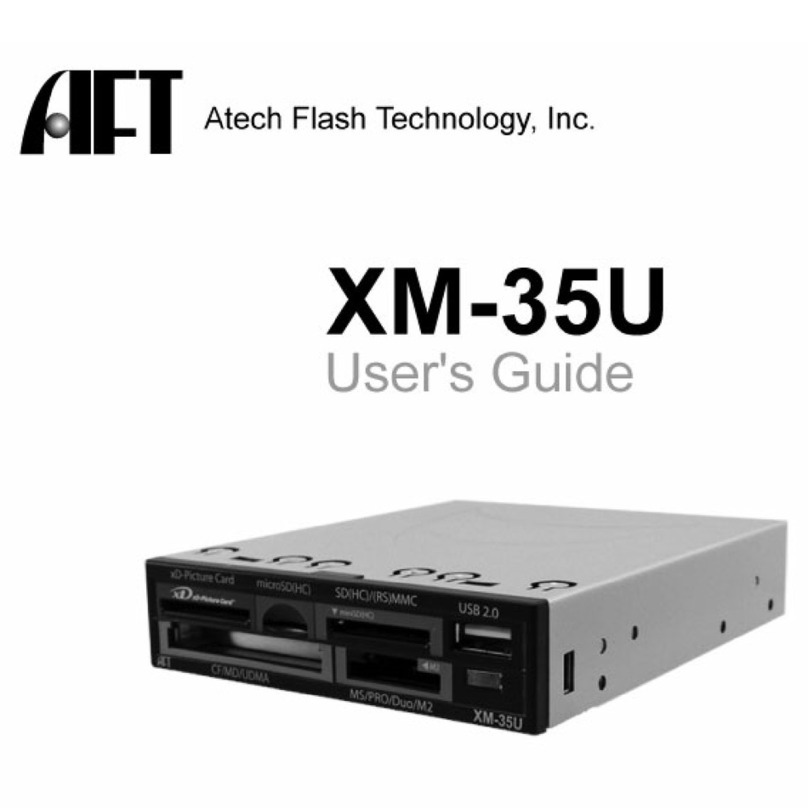
Atech Flash Technology
Atech Flash Technology XM-35U user manual
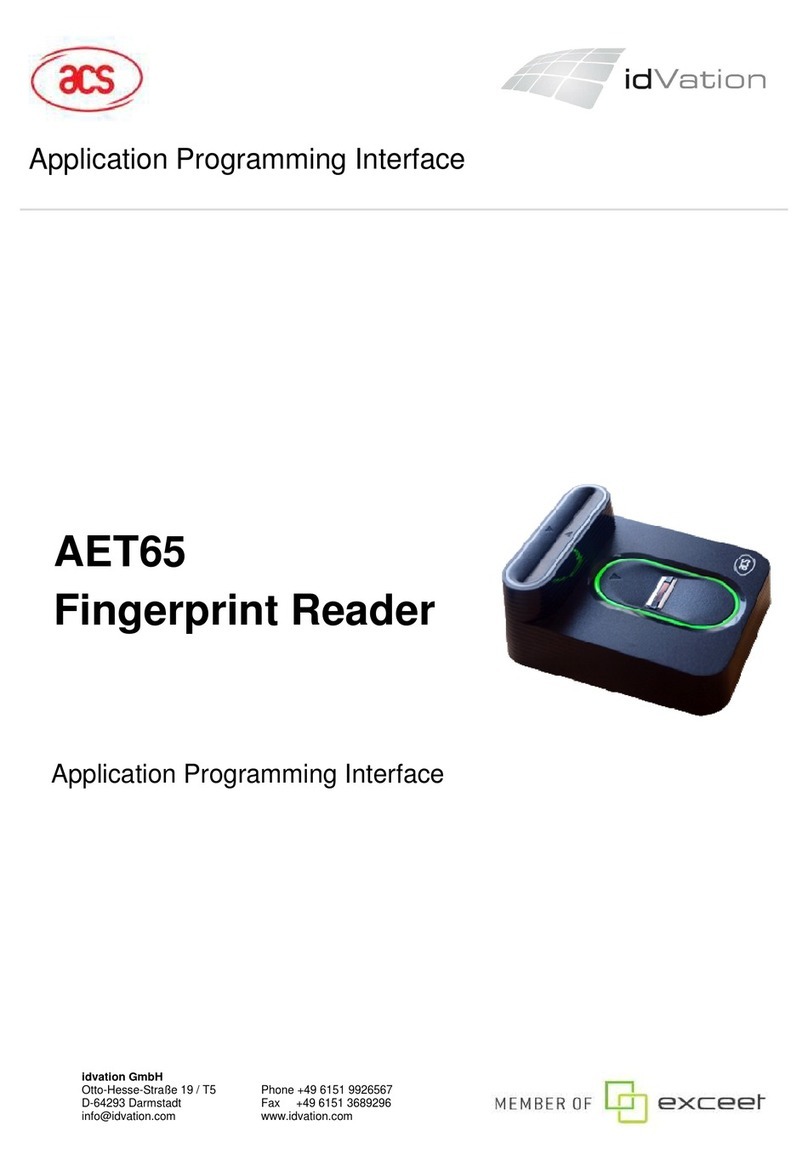
ACS
ACS AET65 Application programming interface
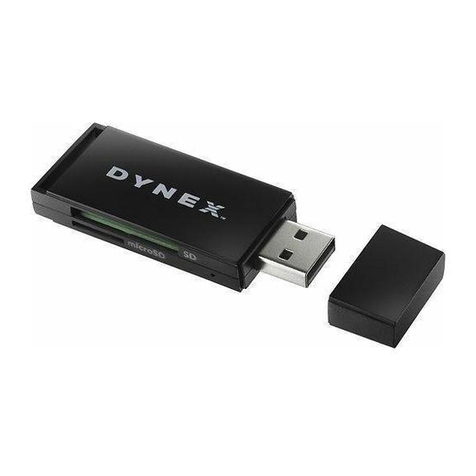
Dynex
Dynex DX-CR112 Frequently asked questions
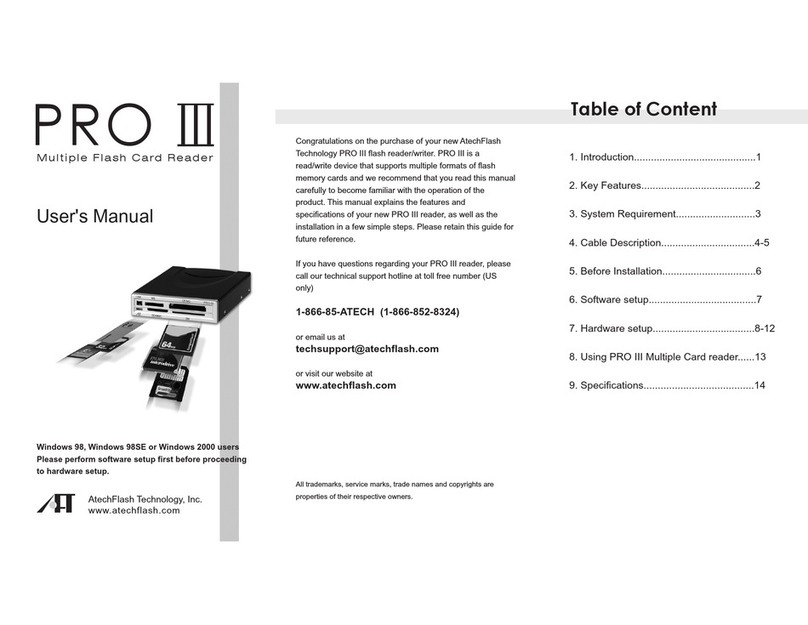
Atech Flash Technology
Atech Flash Technology PRO III user manual

TAGSYS RFID
TAGSYS RFID Medio L400 user guide
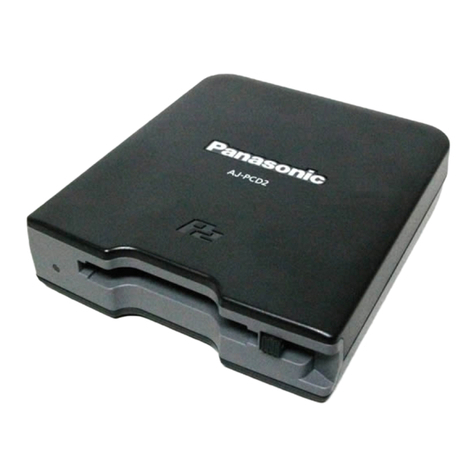
Panasonic
Panasonic AJ-PCD2G operating instructions
